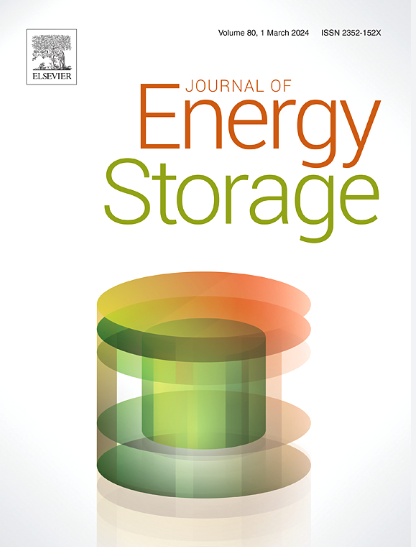Enhanced electrical and thermal energy storage systems performance in smart building using FLHNN and BWOA approach
IF 8.9
2区 工程技术
Q1 ENERGY & FUELS
引用次数: 0
Abstract
With the increasing integration of photovoltaic (PV) systems in smart residential buildings, the efficient management of electrical and thermal energy storage is becoming a critical challenge. This study introduces a novel hybrid technique combining Federated Learning on Heterogeneous Neural Networks (FLHNN) with the Binary Whale Optimization Algorithm (BWOA), termed the FLHNN-BWOA approach, to optimize the integration of photovoltaic systems and energy storage in smart residential buildings. The principal aim is to enhance PV self-consumption and lower the price of electricity through the optimal sizing of thermal storage systems (TSS) and battery storage systems (BSS). Unlike existing techniques, the FLHNN-BWOA approach offers a unique combination of accurate energy demand forecasting and optimized energy storage management, improving system performance and cost-efficiency. The proposed technique is implemented on the MATLAB platform and its performance is compared with existing methods like Artificial Neural Network (ANN), Feed forward Neural Network (FNN) and Light Neural Network (LNN). With the proposed approach, the optimal sizing of TSS and BSS reduces the electricity cost by 82.6 % and PV self-consumption is raised to 59.1 %. Furthermore, the study demonstrates the scalability of the approach, highlighting its potential for broader applications in various residential and commercial buildings. These findings highlight the potential of the FLHNN-BWOA technique in optimizing the sizing of energy storage systems, providing a highly efficient solution for enhancing energy self-sufficiency, sustainability and cost-effectiveness in smart residential buildings.
利用FLHNN和BWOA方法增强智能建筑中电能和热能存储系统的性能
随着光伏(PV)系统在智能住宅建筑中的集成越来越多,电能和热能存储的有效管理成为一个关键的挑战。本研究提出了一种新的混合技术,将基于异构神经网络的联邦学习(FLHNN)与二元鲸鱼优化算法(BWOA)相结合,称为FLHNN-BWOA方法,以优化智能住宅光伏系统和储能系统的集成。主要目标是通过优化储热系统(TSS)和电池存储系统(BSS)的规模来提高光伏的自我消耗并降低电价。与现有技术不同,FLHNN-BWOA方法提供了准确的能源需求预测和优化的储能管理的独特组合,提高了系统性能和成本效益。在MATLAB平台上实现了该方法,并与人工神经网络(ANN)、前馈神经网络(FNN)和轻神经网络(LNN)等现有方法进行了性能比较。采用该方法,TSS和BSS的最优规模可使电力成本降低82.6%,光伏自用率提高到59.1%。此外,该研究还展示了该方法的可扩展性,强调了其在各种住宅和商业建筑中更广泛应用的潜力。这些发现突出了FLHNN-BWOA技术在优化储能系统规模方面的潜力,为提高智能住宅建筑的能源自给、可持续性和成本效益提供了一种高效的解决方案。
本文章由计算机程序翻译,如有差异,请以英文原文为准。
求助全文
约1分钟内获得全文
求助全文
来源期刊

Journal of energy storage
Energy-Renewable Energy, Sustainability and the Environment
CiteScore
11.80
自引率
24.50%
发文量
2262
审稿时长
69 days
期刊介绍:
Journal of energy storage focusses on all aspects of energy storage, in particular systems integration, electric grid integration, modelling and analysis, novel energy storage technologies, sizing and management strategies, business models for operation of storage systems and energy storage developments worldwide.
 求助内容:
求助内容: 应助结果提醒方式:
应助结果提醒方式:


